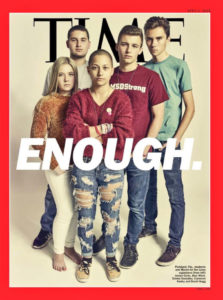Over the past decade, many marketers and organizations have prioritized millennials as the essential demographic target for messaging and offerings. However, there is a new generation you should be obsessed with: the post-millennial.
NOTE: For the purposes of this blog post, we define post-millennials (aka Generation Z, the iGeneration, Founders, Plurals) as those born between 1997 and 2012.
If museums are going to continue to maintain relevance in the future, developing programming targeted at these folks is essential. Below are three characteristics that museums should understand about this second-largest and most ethnically diverse generation.
1. They are connected, educated and will reach their own conclusion
Growing up in a time where Google is a verb and your smartphone is an additional appendage, this generation knows how to self-educate and find information. Unlike generations before them, they don’t live in a vacuum, solely influenced by their parents and friends.
Digital media is key to how this generation learns, communicates and socializes. According to research from Nonprofit Tech for Good, post-millennials spends 3.5 hours on their smartphone daily. They are constantly interacting and sharing on social media. Good or bad – they will let you know how they feel on social. If a cause is very important to them, they can quickly marshal large groups to come together in person.
Speak Up For Science—today from 1-4pm. ⚛️ It's nasty outside but warm & dry in the museum. Come advocate for science & its protection, Chicago! https://t.co/1ZbxS8cuZM #OnItTogether pic.twitter.com/LvYw3pBh2g
— Field Museum (@FieldMuseum) April 14, 2018
Yes! 🙌 #OnItTogether pic.twitter.com/cO1BfNNdcs
— Field Museum (@FieldMuseum) April 14, 2018
How to apply this to your museum:
Similar to online dating, your post-millennial will do a quick Facebook search to check out your museum before they even consider entering its doors, which is why a digital presence is essential. You have to be everywhere your audience is by creatively using your social media channels, e-newsletters and website to establish multiple touchpoints. The good news? A single positive experience from a post-millennial can provide immense lifetime value: they will tell their friends, and their friends will tell their friends, magnifying the benefit exponentially. To see who’s doing this well, check out our last blog post on museums who are creating YouTube content to reach new audiences.
Similar to online dating, your post-millennial will do a quick Facebook search to check out your museum before they even consider entering its doors, which is why a digital presence is essential.
2. They are role models and activists

Post-millennials are growing up during an era of many challenges: the economic recession, social inequalities, school shootings, and a very divided political climate, to name a few. But unlike some predecessors, they want to do something about it.
A recent Washington Post article referencing the March for Our Lives states: “Millennials disrupted the system, Gen Z is here to fix the mess.” You can see their impact firsthand on the nightly news or covers of mainstream magazines.
Post-millennials are also changing the nature of the celebrity-“normal person” relationship. Whereas in years past people wanted to be like their favorite celebrities, many of today’s celebrities are modeling themselves on regular people. Miley Cyrus and Demi Lovato offered to perform at the March for Our Lives because they were moved by Emma González (a survivor of the school shooting at Marjory Stoneman Douglas High School) not because Emma begged them to perform but because they see her as their role model.
How to apply this to your museum:
Don’t be afraid to take a stance on social subjects that matter to your museum and your mission. Encourage a dialogue between you and your audience. The Minneapolis Institute of Art is doing just that with their MASS ACTION Initiative (Museum as Site for Social Action).
3. They are malleable
As a millennial writing this blog post, I’m impressed by how in tune this next generation is with what is going on in the world, as well as how committed they are to changing it. And at such a young age! However, they are still learning, will still have life experiences, and are still forming opinions that will shape who they are, and how they behave, in the future. Ranging from ages 6-21, this generation is open-minded and not yet set in their ways.

How to apply this to your museum:
This should be the exciting part. If you win their hearts by keeping the aforementioned characteristics top of mind, you help this generation form habits that will last a lifetime. Post-millennials will go on to grow and have families; the relationship they make with your museum now will shape how they see museums in the future.
+++
This generation has proven that they cannot be ignored. Their mission is to change the world and preserve what is valuable and worthwhile. Is it just me, or does that mission seem very similar to museums’?
Their mission is to change the world and preserve what is valuable and worthwhile. Is it just me, or does that mission seem very similar to museums’?
